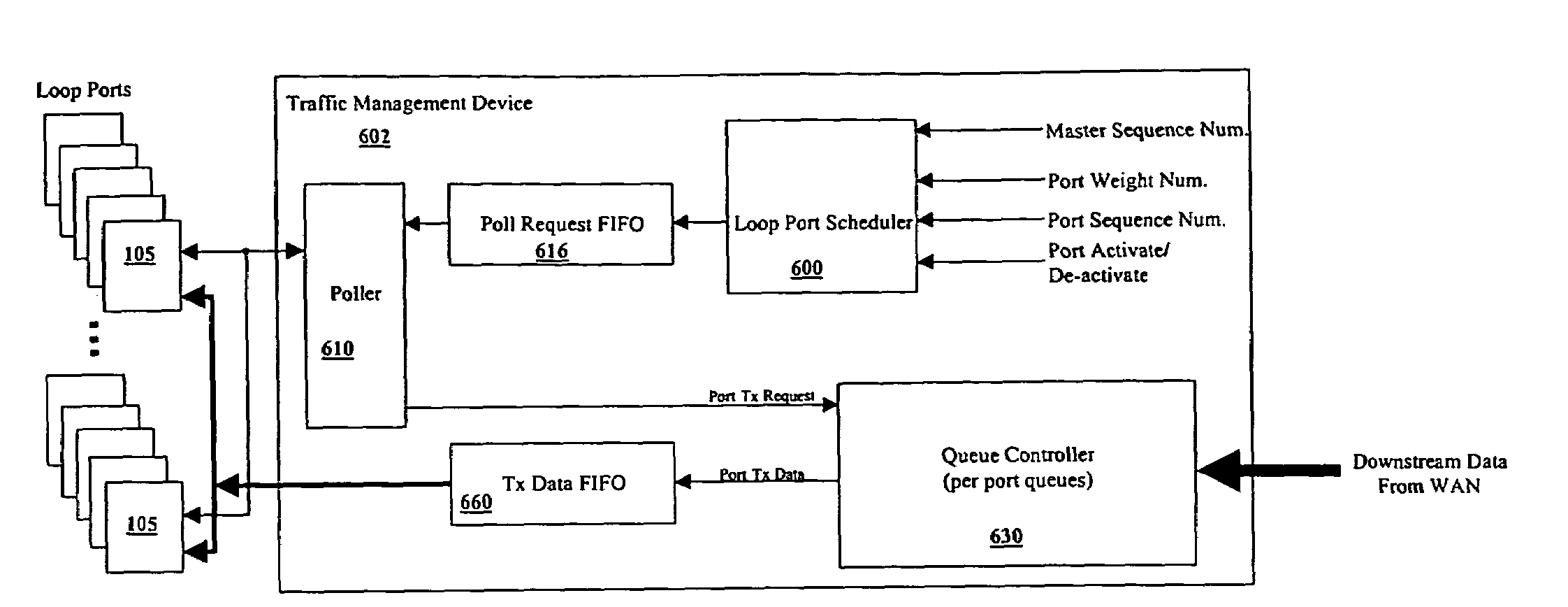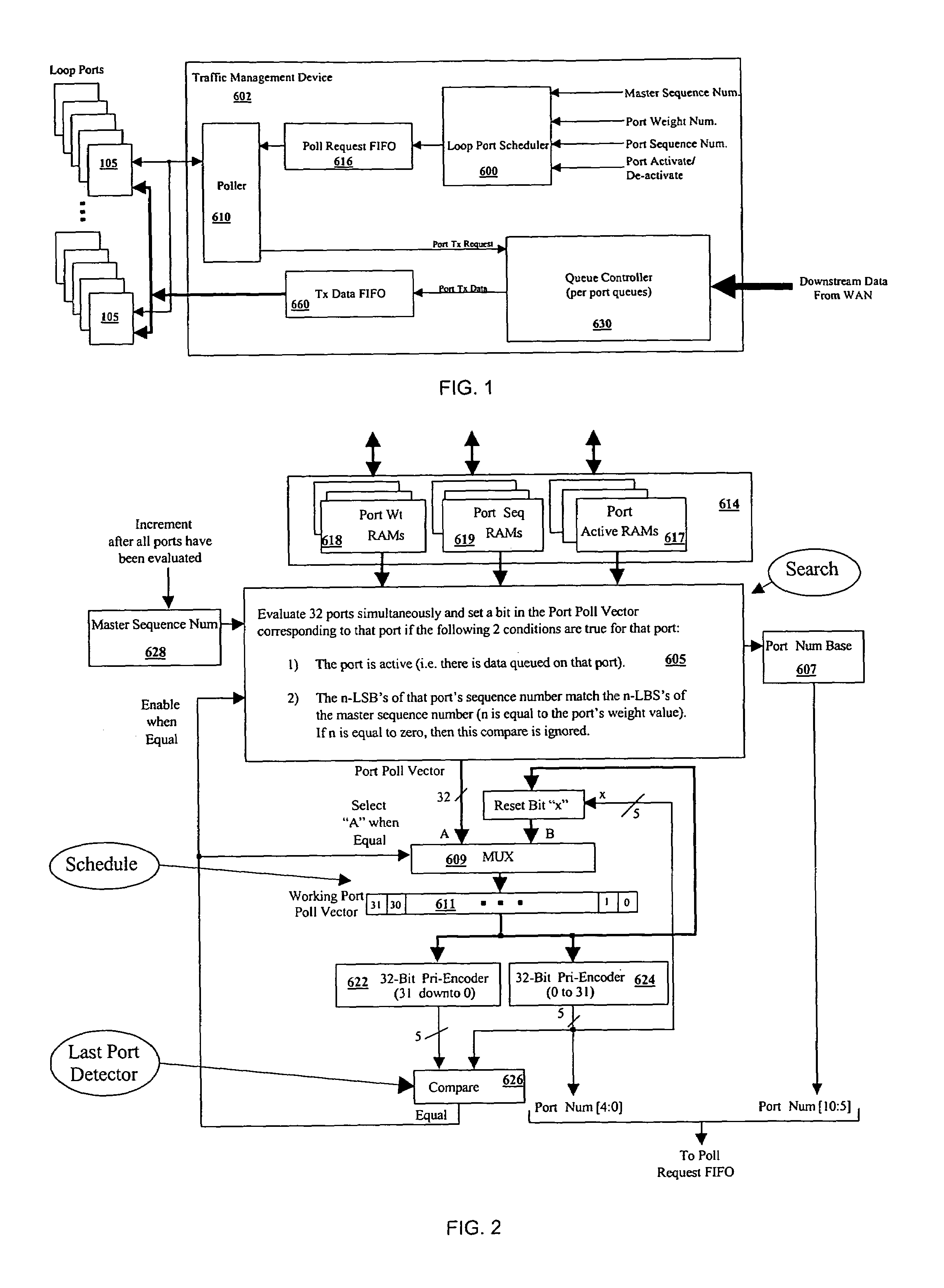Method and apparatus for managing data traffic between a high capacity source and multiple destinations
a data traffic and high-capacity source technology, applied in the field of digital communications, can solve the problems of affecting the efficiency of data scheduling, and reducing so as to achieve the effect of minimizing the probability of data being accepted, high probability, and reducing the cost of implementation
- Summary
- Abstract
- Description
- Claims
- Application Information
AI Technical Summary
Benefits of technology
Problems solved by technology
Method used
Image
Examples
Embodiment Construction
Example Traffic Management Device Architecture
[0087]FIG. 1 illustrates an example traffic management module according to specific embodiments of the invention. As shown in the figure, an example traffic management device 602 according to the invention includes a poller 610, for issuing poll requests to a plurality of destinations (such as port terminations 105). A loop port scheduler (LPS) 600 issues poll requests to poller 610 via Poll Request FIFO 616. A specific example process for selecting scheduled ports is discussed in the following section. Poller 610 uses the PortIDs from the Poll Request FIFO 616, to poll ports looking for asserted port available signals (TPAs) to which cells may be transmitted.
[0088]Poller 610 polls the requested loop port. If the loop port responds to the poll with status indicating it can accept data (e.g. responds with an active TPA), then the Poller issues a transmit data request for that port to the Queue Controller 630. The Queue Controller maintain...
PUM
 Login to View More
Login to View More Abstract
Description
Claims
Application Information
 Login to View More
Login to View More - R&D
- Intellectual Property
- Life Sciences
- Materials
- Tech Scout
- Unparalleled Data Quality
- Higher Quality Content
- 60% Fewer Hallucinations
Browse by: Latest US Patents, China's latest patents, Technical Efficacy Thesaurus, Application Domain, Technology Topic, Popular Technical Reports.
© 2025 PatSnap. All rights reserved.Legal|Privacy policy|Modern Slavery Act Transparency Statement|Sitemap|About US| Contact US: help@patsnap.com



